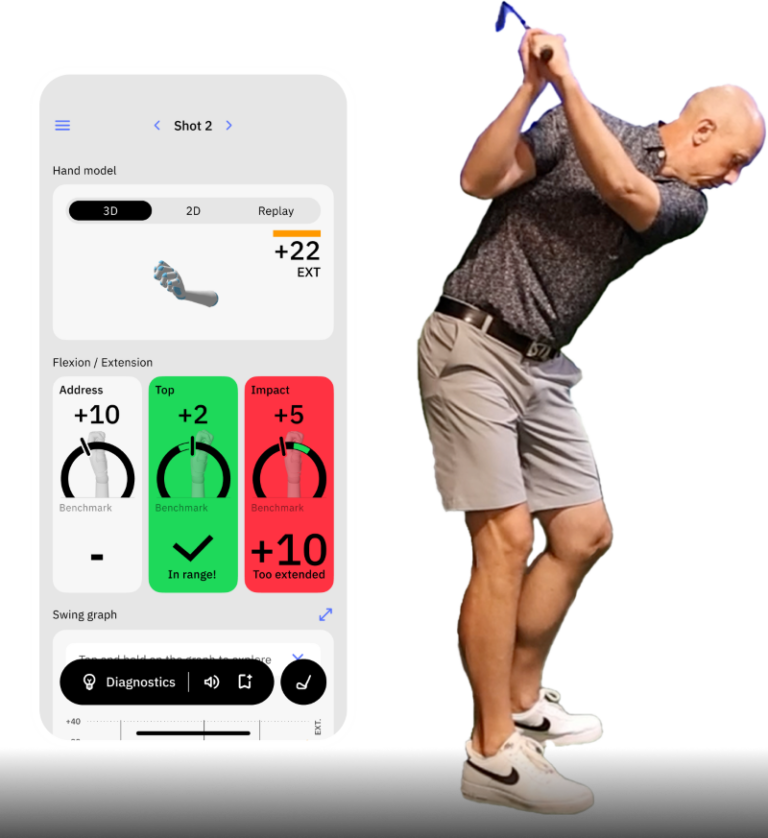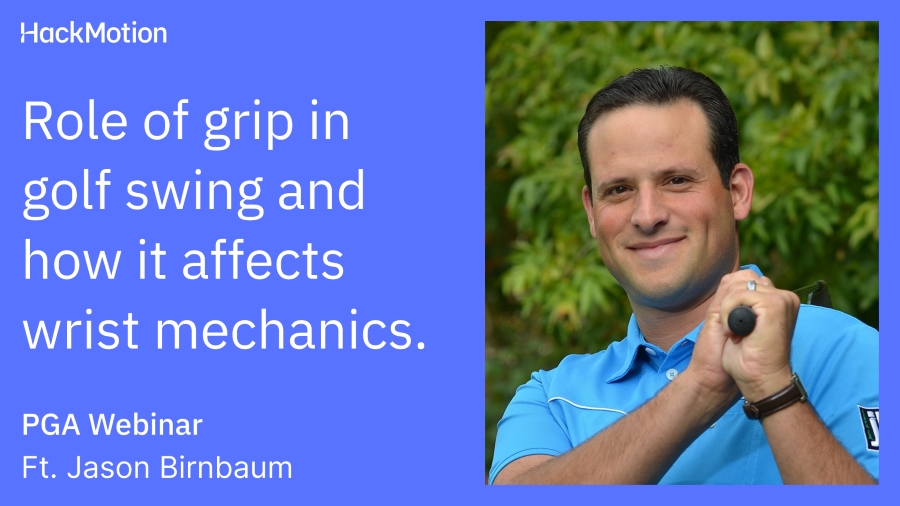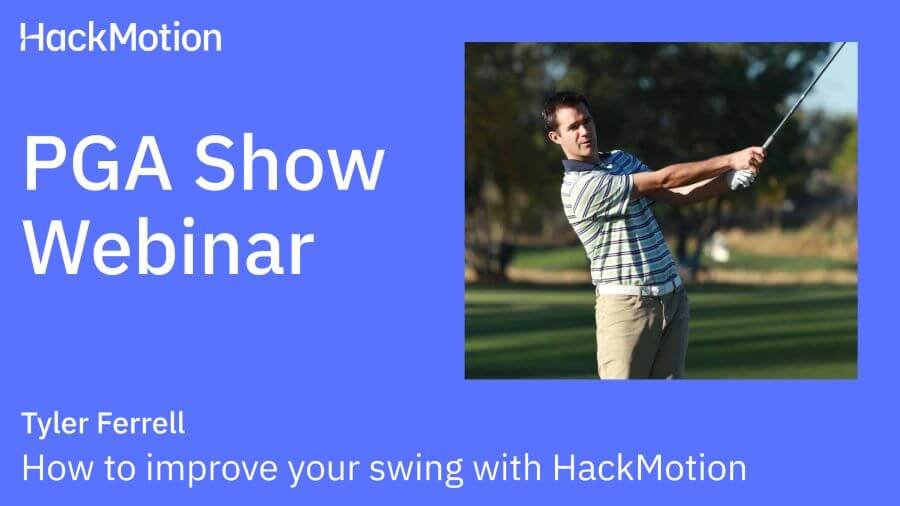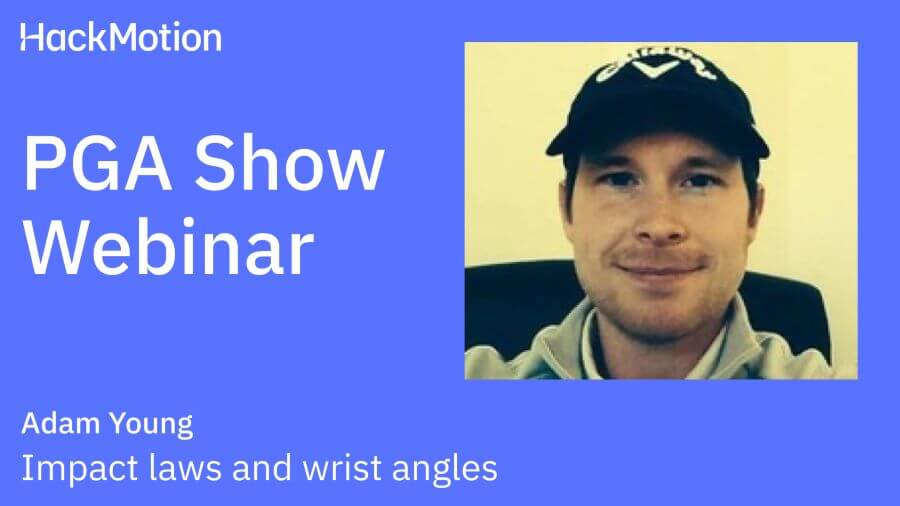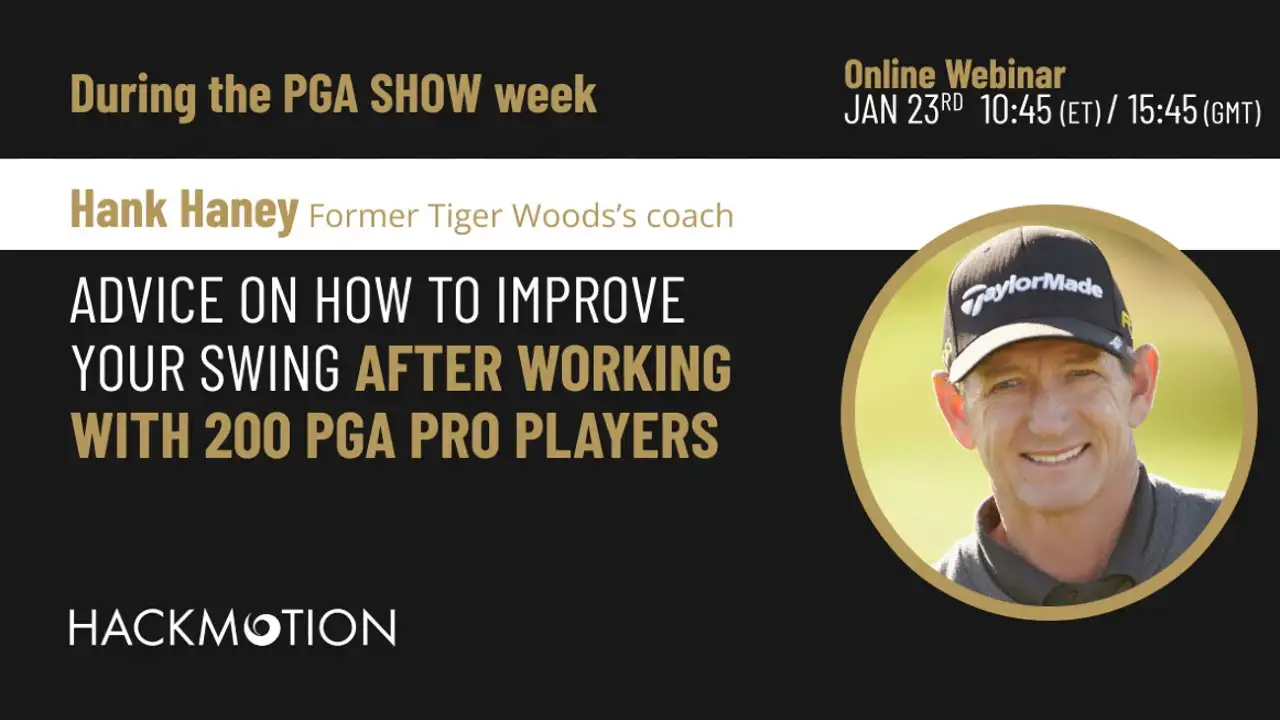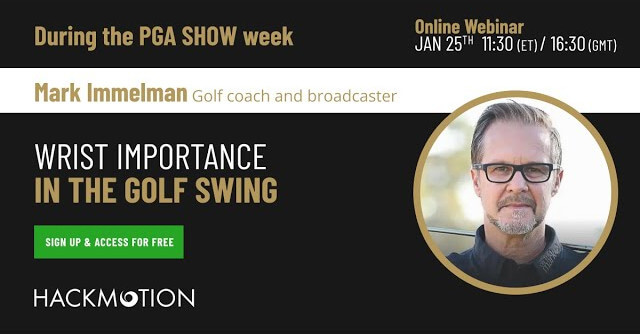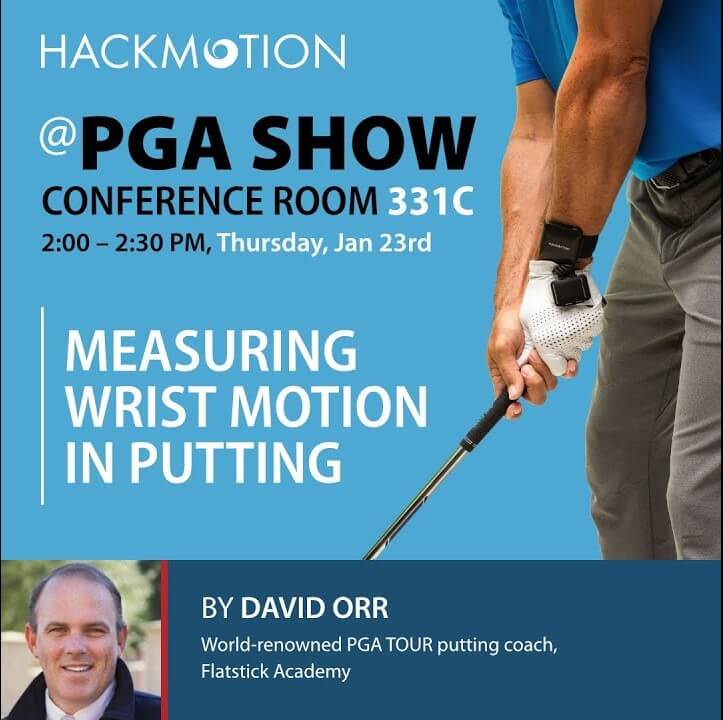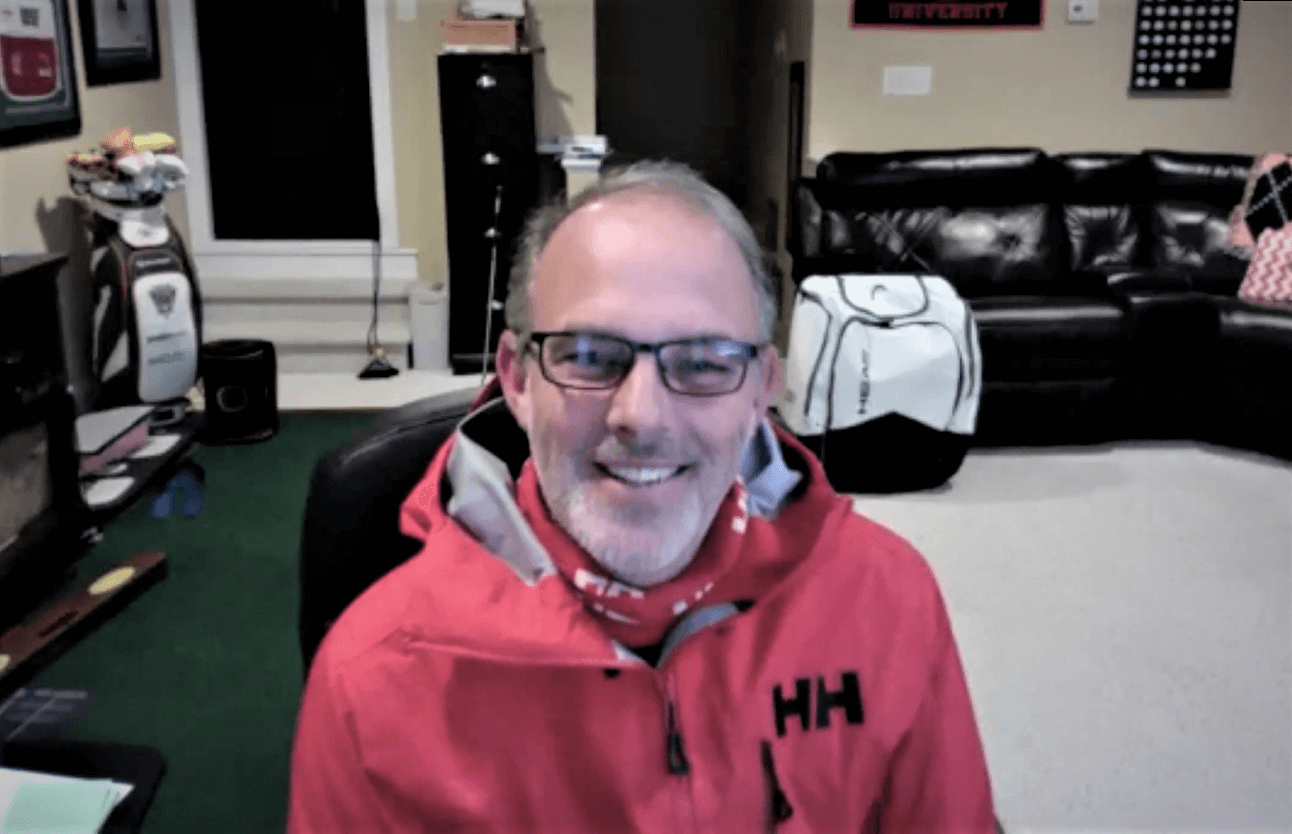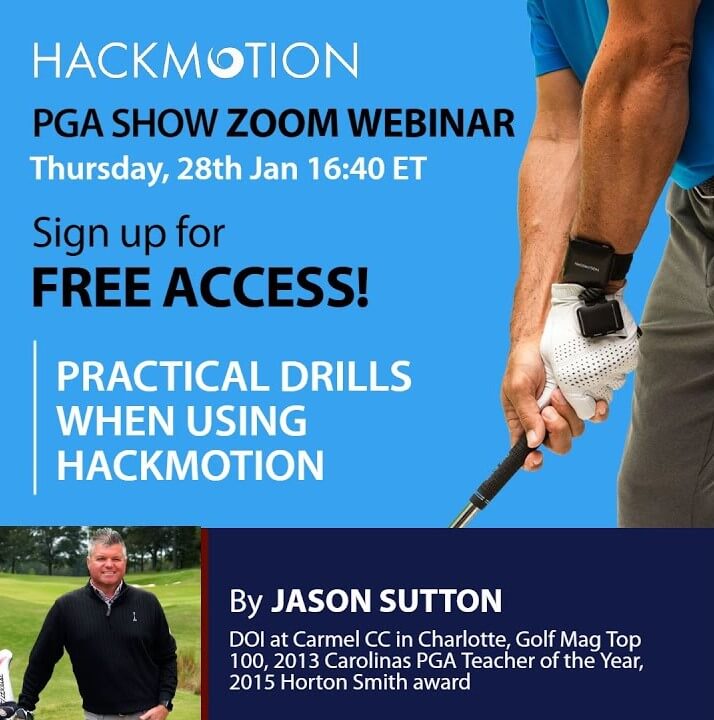Hank Haney – Fix Your Wrist Motion for Better Clubface Control
Hank Haney, a world-renowned golf instructor, shared his tips for swing improvement at the HackMotion PGA Show webinar.
He has been awarded numerous times by Golf Digest and Golf Monthly as the best golf teacher and has coached many tour players, including Tiger Woods and Mark O’Meara.
Additionally, Haney has developed a popular video training program on how to fix a slice and is sharing his expertise on why wrists matter and how to fix golfers’ clubface control issues.
To listen to the full conversation, watch the video below and check out some of the key points that Haney shared with us about wrist angles, wrist action, and HackMotion.
Contents
- Three Ways to Become a Better Player (Where to Start?)
- Golf Club on the Proper Plane Can Help with Wrist Position
- If You Can Fix a Slice, You Should be Able to Fix a Hook
- The Grip Needs to Match Your Swing
- The Easiest Way to Learn is by Capturing a Feel
- Wrist Position in the Swing is Something Golfers are Always Working On
- Practice Swings are Essential to Learning
- Extreme Wrist Angles Can Make Certain Shots Easier or Harder
Three Ways to Become a Better Player (Where to Start?)
With the history Hank Haney has in golf, he has seen a lot of swing and certainly knows what works and what doesn’t work.
He believes there are three ways to become a better player. These include fixing the big missing, eliminating two chips, and getting rid of 3 putts altogether.
Fix Your Big Miss (Helps To Get Rid of Penalty Shots)
What is the miss that causes you penalty strokes? Do you hit the ball to the right off the tee? Are your shots pulling to the left?
What about topping the ball or chunking it?
Where do you lose your strokes in a round?
Whatever this issue is, it has to be fixed first. From there, you can move on to the next miss. Haney believes there is always a miss that golfers can work on.
Eliminate Two Chips
If you miss a green on your approach shot, it’s not a problem. You simply need to get up and down.
If you need two chips to get on the green or you put yourself in a position where you can only 2 or 3 putt, your score is going to go up.
One chip per hole should be the maximum.
Eliminate 3 Putts
A 3 putt is another score killer. Getting the ball in the hole in 2 putts or less is a must for golfers of all abilities to learn.
Some consistency in your stroke, an understanding of feel and stability, and, of course, proper alignment and speed will all help you eliminate the 3 putt.
Golf Club on the Proper Plane Can Help with Wrist Position
Golfers tend to get too much cupping or bowing of their wrists in the golf swing. At impact, the most common mistake we see is a cupped wrist that causes a shot to go to the right and the clubface to open.
Haney will teach players how to flatten that wrist and close the clubface sooner but also how to get on more of an arc swing path as opposed to a straight up and down swing path.
Interestingly, Haney says, “An open clubface will not miraculously close itself just because it should.” Players need to learn to feel what it takes to square hands at impact. If your clubface is not square at the top, it needs to be squared on the way to the ball.
If you have a similar wrist position to Dustin Johnson or Jon Rahm, you don’t have to work on squaring the clubface and closing it because it’s already there at the top of the backswing.

If You Can Fix a Slice, You Should be Able to Fix a Hook
Slicing is a common issue for the majority of amateur golfers. Haney reminds us that a slice is caused when the golfer’s clubface is open relative to the path of the swing.
His recommendation is to fix the open clubface first, then look at the swing path. To determine why the clubface is open, check the grip and wrist position throughout the swing.
According to Haney, choosing a little stronger grip can help to close the face. To assess which part of the swing needs correction, you have to evaluate whether there is excessive lead wrist cupping (extension) at the top, in transition, or at the impact that is opening the clubface.
The Grip Needs to Match Your Swing
A technically neutral grip can work with a technically neutral swing.
Hank Haney
The neutral grip is largely thought of as the best possible grip for golfers.
But is it?
Haney cleared this right up for us by saying that a grip that is neutral is perfect for a golfer with a neutral swing. If your swing is anything but neutral, you may need a stronger or weaker golf grip.
One of the great things about working with HackMotion is that you can develop consistency in wrist position. If it’s okay to have a slightly strong or weak grip depending on who you are as a player, is it okay to have a strong grip one time and a weak the next?
No!
You need consistency in your grip position, especially when you think you are being consistent with the position of your hands. HackMotion allows you to measure this and ensure you are correct.
The Easiest Way to Learn is by Capturing a Feel
At HackMotion, we know a thing or two about feel and its importance in the game. Hank Haney couldn’t agree more.
You can tell someone how to swing, and you can even show them how to swing, but it’s not the same as being able to feel how to swing a golf club. If you are able to feel what your wrists are doing in the golf swing and get instant audio feedback from HackMotion, you have a real chance of making a change in your game.
In addition, HackMotion offers real-time feedback. You won’t have to wait until your practice swing is over to check on your results. Hank Haney mentions impact bags, slow-motion swings, and even just the rehearsal of the wrist position as additional ways to capture feel.
Wrist Position in the Swing is Something Golfers are Always Working On
One of the questions we asked Haney was whether or not professionals have to work on their wrist position in the golf swing.
He mentioned that this is a swing element that players are always working on. Even the best golfers in the game need to spend time on their wrist positions and make sure they are optimizing them for better accuracy, power, and turf interaction.
HackMotion is not a tool built for the beginner only; it’s a life long feedback and measuring tool to get you to any level of golf.
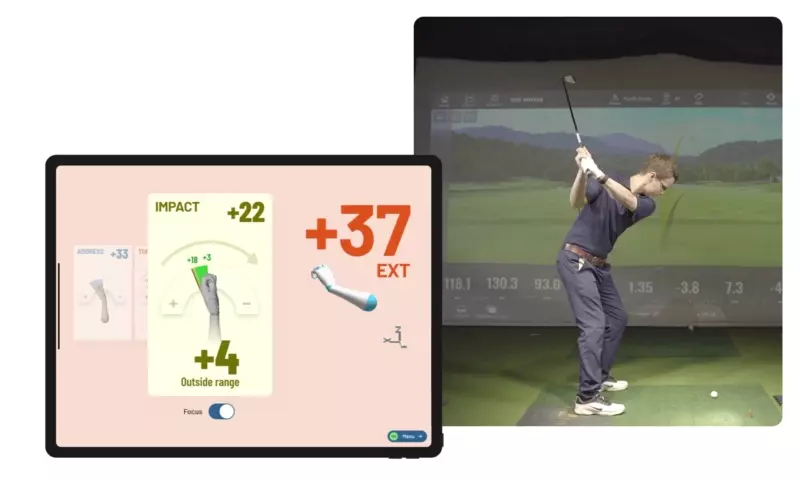
Practice Swings are Essential to Learning
If you can make a great practice swing, you can learn to hit a proper golf shot. Until you can get that practice swing, how would you take a 100mph swing and expect to get it?
Practice swings are essential to learning.
When you can combine those practice swings with a little bit of technology and data, the information you get is even more impressive and helpful.
Wear your HackMotion during your practice sessions and see if you are getting the correct positions on the practice swings. If you can do it here, you can move to the full swing and hit balls.
Practice making the complete opposite motion of whatever your mistake is. For example, if your slice is caused by excessive lead wrist cupping (extension) at the top, make swings with a bowed (flexed) wrist.
Slow rehearsals are essential to learn the new motion. Repeat them multiple times, gradually increasing the speed.
Golfers need to get a “feel” of the correct motion. A coach can position you to achieve the “feel,” and tools like HackMotion’s audio feedback, which gives a sound signal when the wrists are in the correct position, can be essential to get the “feel.”
Extreme Wrist Angles Can Make Certain Shots Easier or Harder
Wrist angle and position won’t be the same for all shots that you hit. Depending on if you are hitting a high or low shot or a full swing or pitch shot, the wrist angle at impact may vary a bit.
Don’t let this stop you; match the wrist angle to the type of shot you are trying to hit. The more time you spend practicing different types of golf shots, the easier this will be.
